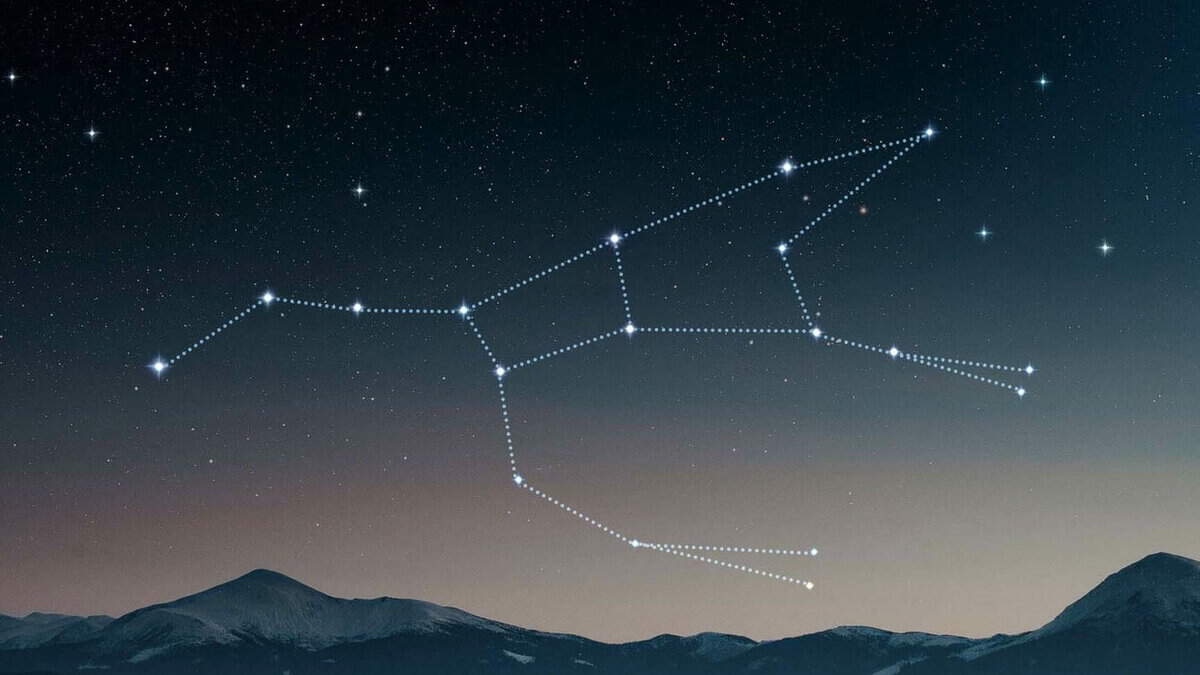Having a good understanding of the major constellations and stars is essential for navigating the celestial sphere. This fact is well-known to all. Equally well-known is the significance of the Big Dipper, also known as Ursa Major, in the night sky of Russia and its neighboring countries. This particular constellation holds great importance not because of its brightness or prominence, but because it remains visible throughout the year, making it an incredibly convenient reference point for locating other stars and constellations. Let us now examine the appearance of Ursa Major during the autumn season and utilize it to identify various captivating stars.
What is the appearance of the dipper in the autumn season?
During the fall season, in the evenings, the dipper of the Big Dipper can be observed in the northern region of the sky, positioned relatively low above the horizon. Its orientation is almost parallel to the horizon, which is commonly depicted in children’s literature.
Identifying the dipper of the Big Dipper during the months of October or November is a straightforward task. Simply step outside during the early evening and direct your gaze towards the northwest, specifically to the right of where the dawn is breaking. Alternatively, in the late afternoon, look towards the north. Unless there are obstructing tall buildings, you will immediately spot the dipper in the sky.
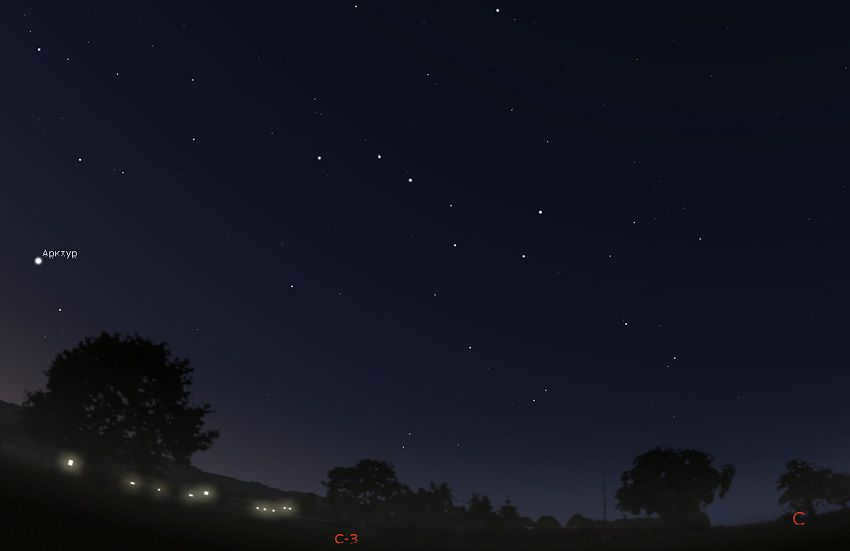
However, urban areas often have bright streetlights that can obscure the view of the ladle in the night sky. To overcome this, one must seek out areas shielded from direct street lamp light, such as the corners of buildings, parks, or riverbanks. Additionally, the presence of smog can further hinder visibility. Moisture particles in the air reflect the light from the streetlights, resulting in a red sky. In these conditions, only the brightest stars are visible, making it challenging to spot the dipper.
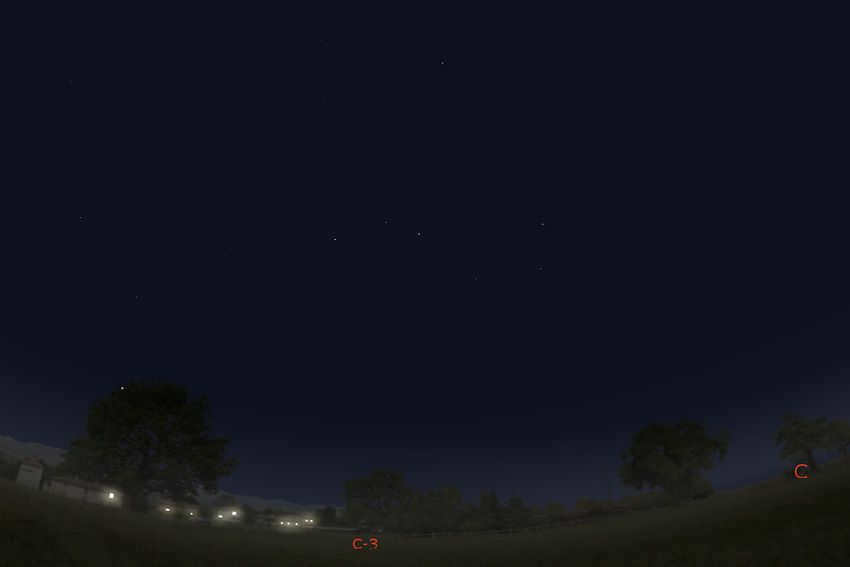

The constellation known as the Big Dipper consists of seven stars. These stars are named Dubhe, Merak, Fekda, Megretz, Aliot, Mitsar, and Benetnash. Each star is relatively similar in brightness, except for Megrets, which is the central star of the bucket and is noticeably dimmer than the others. The names of these stars may sound unfamiliar, but they were actually inherited from Arab astronomers who preserved ancient knowledge during the dark Middle Ages.
The position of the Big Dipper’s bucket during different times of the day
During the evening and night, the Big Dipper can be seen in its typical location in the northwest and north. However, as we move towards midnight, it begins to ascend on its handle, resembling a person on its haunches. This is the unique configuration of the ladle in late October at midnight.
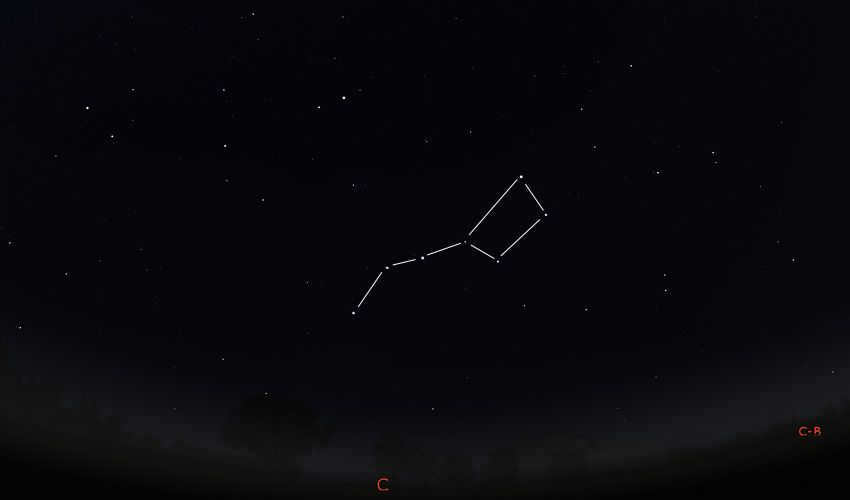

During the late hours of the night, the Big Dipper undergoes a significant transformation compared to its evening position. It now points towards the northeast and stands almost vertically on its handle!
As dawn approaches, the Big Dipper can be observed at a considerable height above the horizon, appearing half-inverted.
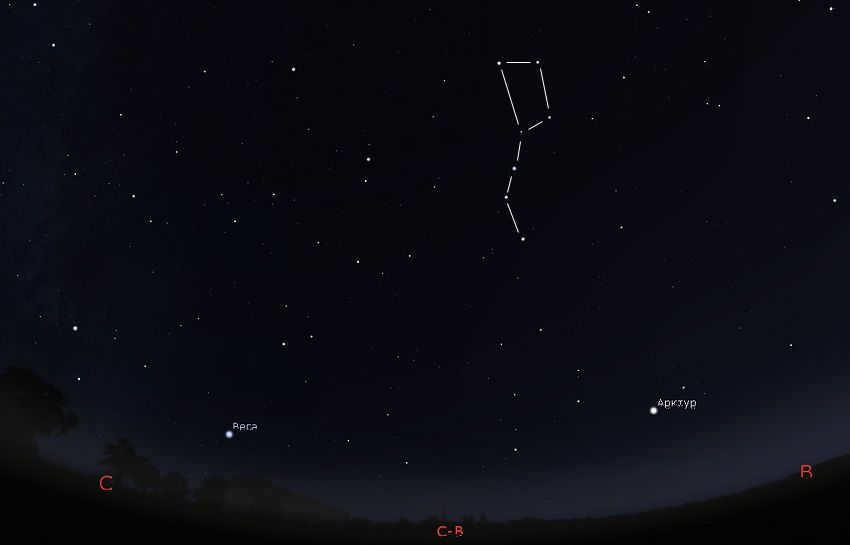
If you closely observe the sketches once more, you can deduce that the pail is in motion along a curved path. What is the cause behind this alteration in the position of the object? Undoubtedly, it is the Earth’s rotation around its axis! (We are oblivious to this rotation as we are on Earth and are carried along with the planet’s movement. However, we witness the rotation of all the stars – from east to west.)
The Earth completes one revolution in 23 hours and 56 minutes – precisely the time it takes for the bucket to complete one orbit across the sky.
How can we use the Big Dipper’s ladle handle to navigate?
Let’s attempt to locate some stars by utilizing the Big Dipper.
To begin with, let’s examine the broken part of the ladle’s handle. If you extend the line of the handle further during early autumn evenings, it will direct you towards a brilliant star situated low on the horizon. This star is likely to flicker intensely and even display various colors. It is Arcturus, the principal star in the constellation Boötes, and one of the most luminous stars visible at night. During October and November, Arcturus can be observed a few hours after sunset in the northwest, and in the morning, before sunrise, in the northeast.
Now, let’s consider the two outermost stars of the Big Dipper, Dubhe and Merak. Imagine connecting them mentally with a line and extending this line beyond Dubhe by a distance that is 5 times the distance between the stars. This extended line will lead you to a star that is approximately as bright as Dubhe and Merak. This particular star is known as Polaris.
Polaris is not famous for being the brightest star, as some individuals who are not familiar with astronomy may believe. Instead, its fame stems from its proximity to the celestial pole. As a result, Polaris remains in the same position in the sky regardless of the time of year, whether it be night, morning, or evening! All the other stars, including the handle of the Big Dipper, revolve around Polaris, which remains steadfast in its place.
Lastly, there is another captivating celestial body that can be observed by tracing a line from the stars Megrez and Dubhe, which make up the upper part of the bucket, towards the right. This line will intersect with Capella, a luminous star that serves as the guidepost for the constellation of Ascendant. During autumn nights, Capella can be seen low in the northeastern sky. However, in winter, it will reach its highest point, appearing above prominent winter constellations like Orion and Taurus.
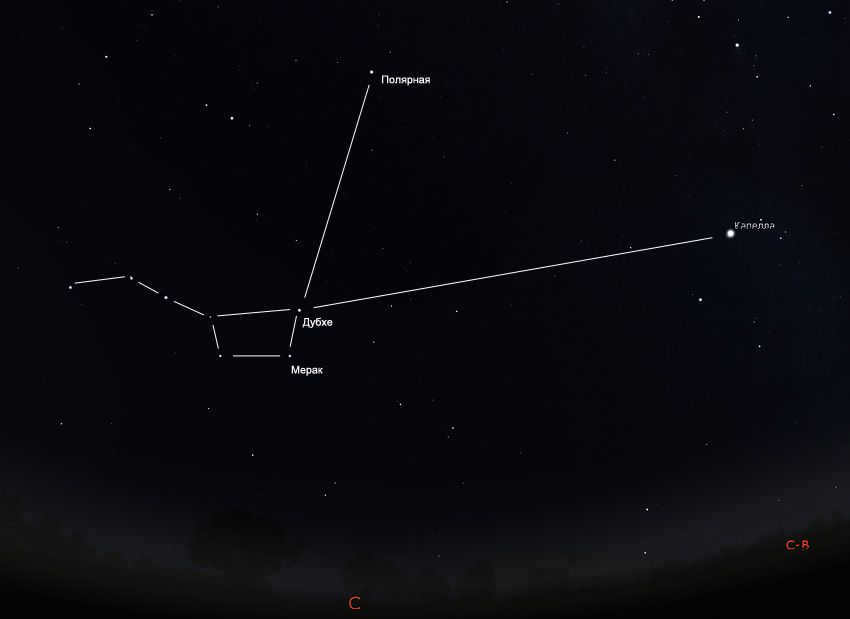
Just like these examples, you can also utilize the dipper of the Big Dipper to locate different constellations. If you are aware of the dipper’s position in the sky, it becomes quite effortless to spot constellations such as Capricorn, Leo, Cassiopeia, and Dragon.
- 1 The Big Dipper is a group of stars that form an asterism
- 2 Why is the constellation of the Big Dipper referred to as a dipper?
- 2.1 Legend of the Big Dipper
- 3.1 Names of the stars that make up the Big Dipper
- 3.2 Letter designation of the stars in the Big Dipper
- 5.1 The Daily and Annual Rotation of the Stars
- 5.2 What does the Big Dipper revolve around in the sky?
- 6.1 Finding Polaris using the Big Dipper
- 6.2 Constellations and stars visible during spring
- 6.3 Constellations and stars visible during winter
- 6.4 Constellations and stars visible during summer
- 6.5 Constellations visible during autumn
The Big Dipper is not a constellation, but rather an asterism
It is important for beginners to understand that the Big Dipper is not classified as a constellation, but rather as an asterism. So what’s the difference? An asterism refers to a specific and easily recognizable pattern of stars. On the other hand, a constellation is a defined region of the sky with clear boundaries, even if these boundaries may not be visible in the actual night sky but are represented on star maps.
Asterisms can consist of stars from different constellations, such as the Summer Triangle which is formed by three bright stars from three separate constellations. Alternatively, an asterism can also be a distinctive feature within a single constellation, typically the most prominent or memorable part.
The Big Bucket is categorized as the second type of asterism and is completely contained within the constellation of the Big Dipper, although it only occupies a relatively small portion of the constellation’s overall area.
What is the reason behind the Big Dipper being called a dipper?
It is now evident why individuals who are not familiar with astronomy refer to the Big Dipper as the constellation of the Big Dipper. The ladle portion is simply the brightest and most prominent part of the constellation. This is why many people mistakenly believe that the Big Dipper consists only of the ladle.
If you wish to observe the entire constellation, you must venture outside of the city or at least find a dark location shielded from street lights. (The other stars in the Big Dipper are not as luminous as the stars in the ladle.)
During a night with no moon, you can easily see three stars forming a distinct triangle directly beneath the Big Dipper. These stars represent the hind legs of the bear.
If you look to the right of this triangle, you’ll notice another triangle that is tilted at a similar angle to the horizon. These stars represent the front paws of the bear.
To the right of the Big Dipper, you can locate the head of the bear. It is formed by faint stars with magnitudes of 3 and 4.
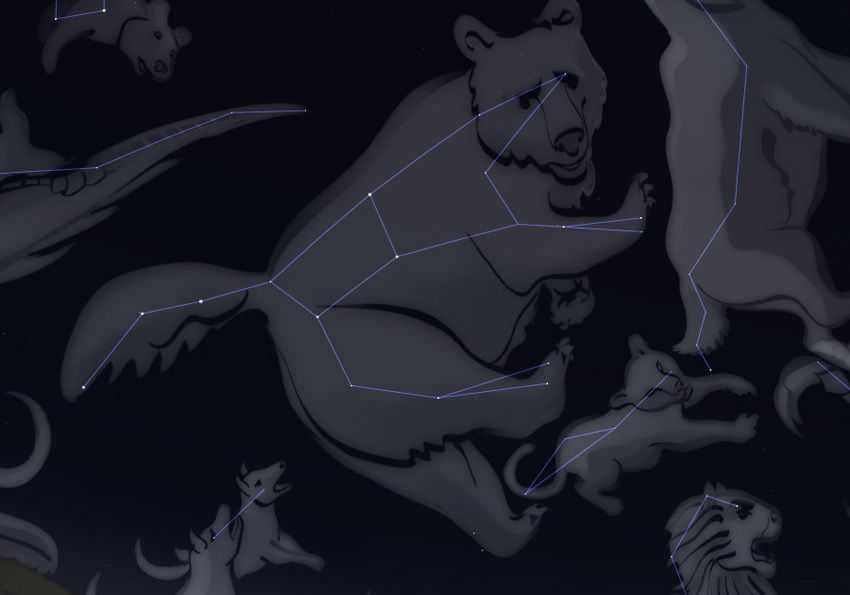
On a dark night in the countryside, it is simple to locate the shape of a massive bear to the right and below the dipper. Image: Stellarium
Therefore, the dipper serves as the bear’s body in the constellation, while its handle represents the long tail.
The Myth of the Great Bear
It is worth noting that actual bears do not possess such long, curved tails. According to ancient mythology, the Great Bear constellation represents Callisto, the daughter of the King of Arcadia. Callisto caught the eye of Zeus, the mighty Greek god, and they had a son named Arcadus. This union angered Artemis, the goddess of the hunt, who transformed Callisto into a bear. As Arcadus grew older, he became a skilled hunter. One fateful day in the woods, he encountered a bear without realizing that it was his own mother. Unknowingly, Arcadus took aim with his bow, nearly killing his mother. Fortunately, Zeus intervened and saved Callisto. To spare her from further harm, Zeus immortalized her in the night sky as the Big Dipper constellation. Some rumors suggest that Zeus simultaneously pulled on the bear’s tail, causing it to elongate.
There are seven stars that form the constellation known as the Big Dipper. The names of these stars, in order from right to left, are: Dubhe (also spelled Dubhe), Merak, Fekda (also known as Fad), Megretz, Aliot, Mitzar, and Benetnash (which is another name for Alkaid).
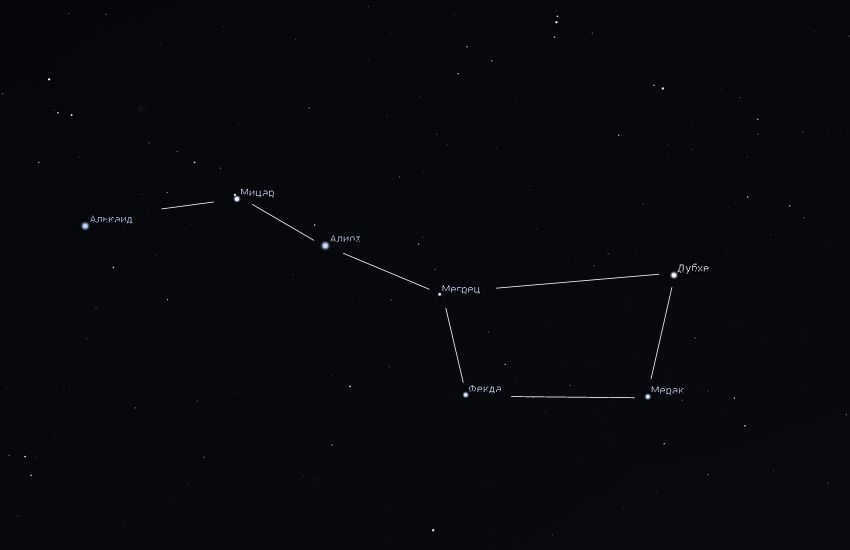
001. The stars of the Big Dipper and their names. Figure: Stellarium
Names of the stars in the constellation of Ursa Major
The stars in the dipper have Arabic names. These names originated during the Dark Ages in Europe, when the knowledge of ancient Greece was lost. However, thanks to astronomers in the Muslim world, the primary scientific works of the ancient Greeks were preserved, albeit translated into Arabic.
So, what do the names of the stars in the Big Dipper signify? Most likely, they have the same meaning as they did for the ancient Greeks.
Dubhe is derived from the Arabic term for the “rear” (referring to the rear of the Big Dipper). The name Merak originates from Al Marakk – the “loins” of the Bear. Fekda signifies the “thigh.” Megretz corresponds to the base of the tail.
Regarding the star’s name, there is a debate about Aliot, but it is likely derived from the Arabic word alyat. In Arabic, Mizar means “belt” or “girdle”. Lastly, the star Benetnash is known by two names, with the second being the popular word Alqaid. Al-kaid banat nash. translates to “leader of the mourners”. According to Allen, some Arab poets expressed that the Daughters – Aliot, Mizar, and Benetnash – were “worthless” as their rising and setting did not bring any rain.
Stars in the Great Bear Constellation: Letter Designations
In the field of astronomy, it is customary to assign stars in constellations with letters from the Greek alphabet. The brightest star is given the designation alpha, the second brightest star is designated beta, and so on, with the final star in the constellation being designated omega.
However, there are a few exceptions to this rule. For instance, the star Pollux in the constellation Gemini is designated with the Greek letter beta, even though it is actually the brightest star in the constellation, surpassing Castor, which is designated as the alpha of Gemini.
Simultaneously, the most brilliant star in the constellation is Aliot or epsilon of the Big Dipper (its brightness is 1.76 m). Following that is Dubhe with a brightness of 1.81 m, then Benetnash (1.85 m).
All stars of the bucket, excluding one, possess a brightness of approximately 2 star magnitudes.
The least bright star in the constellation Ursa Major is Megretz, also known as Delta Ursa Majoris. It can be found at the point where the handle separates from the ladle. Megretz has a luminosity of 3.3 m – making it the only star of the third magnitude in the constellation. In rural areas with little light pollution, Megretz appears nearly as bright as the other stars in the group. However, in urban areas with strong artificial lighting, the star is often difficult to spot. The ladle shape of the constellation is made up of a curved handle and the triangle formed by the stars Dubhe, Merak, and Fekda. Because of this arrangement, beginners often struggle to identify the ladle shape.
The Changing Position of the Big Dipper throughout the Year
In Russia, the Big Dipper never dips below the horizon, but its location in the night sky shifts throughout the seasons. A visual representation can help illustrate these changes.
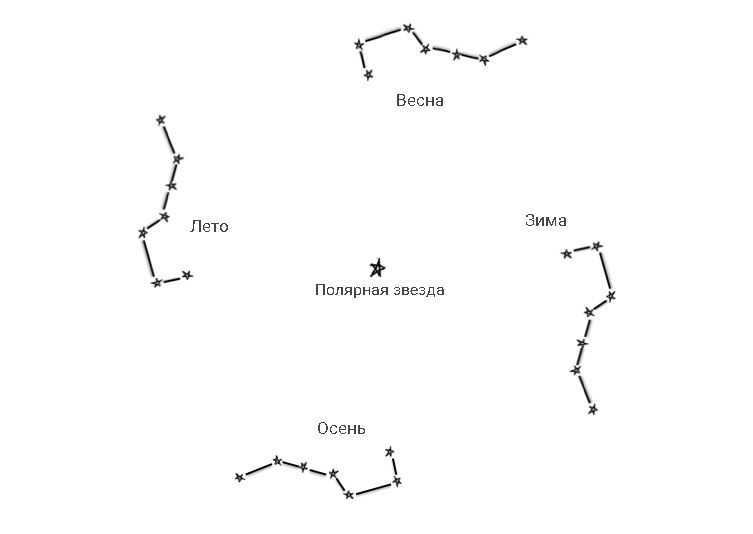
During the autumn season, the Big Dipper constellation appears like a spoon resting on the horizon, ready to catch the falling leaves of the season. As winter approaches, the shape of the constellation transforms into a ladle, standing upright like an icicle hanging from rooftops. When spring arrives, the figure of the Big Dipper turns upside down, as if pouring out heavy raindrops of the season. However, during the summer months, the Big Dipper returns to its upright position, with the bowl of the ladle facing upwards. These distinct patterns can be observed in the evening and early night hours. Reference: liebacklookup.com
In its original form, the ladle shape of the Big Dipper constellation is most noticeable during the fall evenings. During this time, it can be seen positioned low above the horizon in the northern part of the sky.
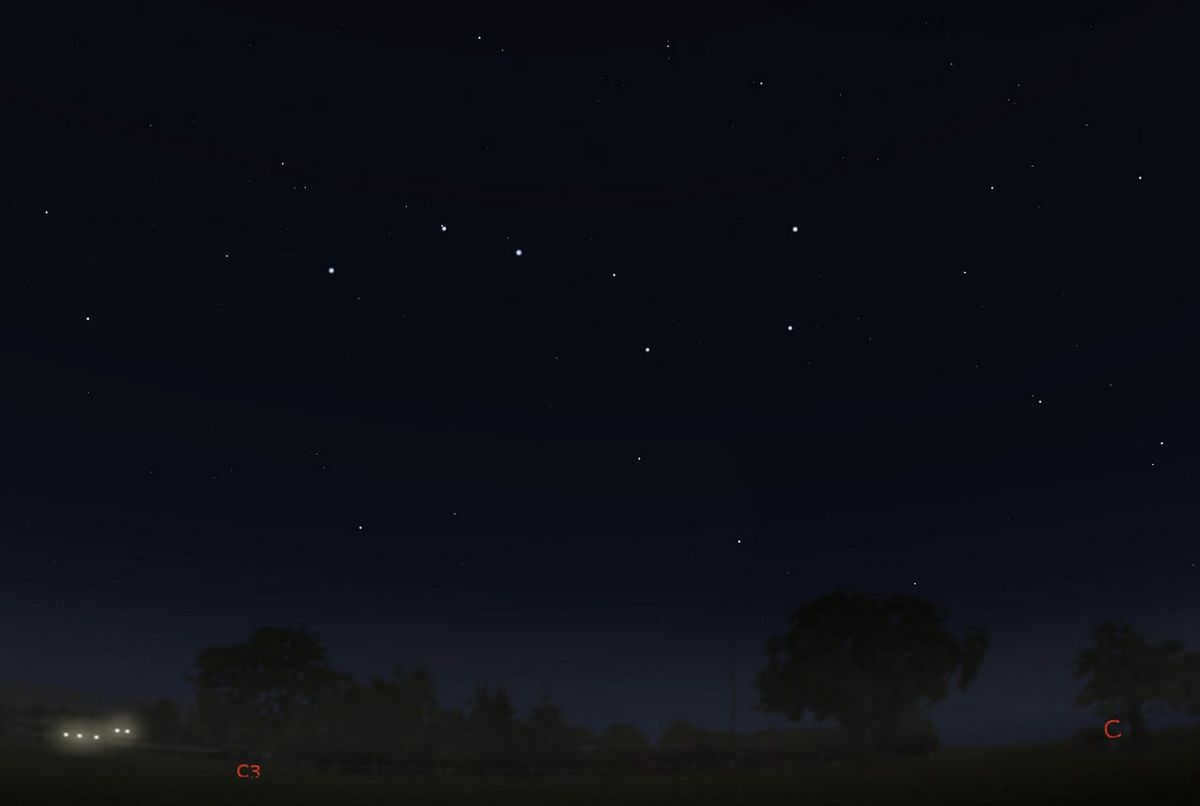
The fall sky features a prominent constellation known as the Big Dipper, which can be found in the northern direction. Image: Stellarium
During the middle and latter parts of winter, the Big Dipper starts to tilt, giving the appearance of standing on a knob. During this period, it can be observed in the northeast direction.

A stunning sight in the evening sky during the month of February. Captured here by Alan Dyer, the Big Dipper shines brightly.
During the spring season, this famous star pattern can be found directly above us! Specifically, in the first half of April, if we gaze up at the Moscow sky, we’ll find the Big Dipper right at the zenith. Interestingly, if we face north and look up, we’ll notice that the ladle appears to be inverted!
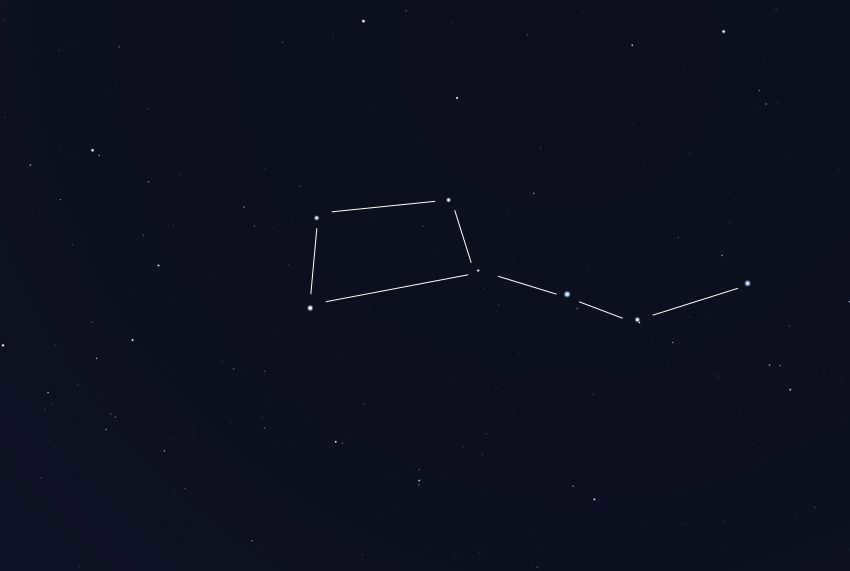
The constellation Ursa Major can be seen in the spring sky. Image: Stellarium
During the summer months, Ursa Major can be observed in the northwest, appearing tilted. However, unlike in the winter, it is not the handle that is pointing downwards, but the ladle itself.
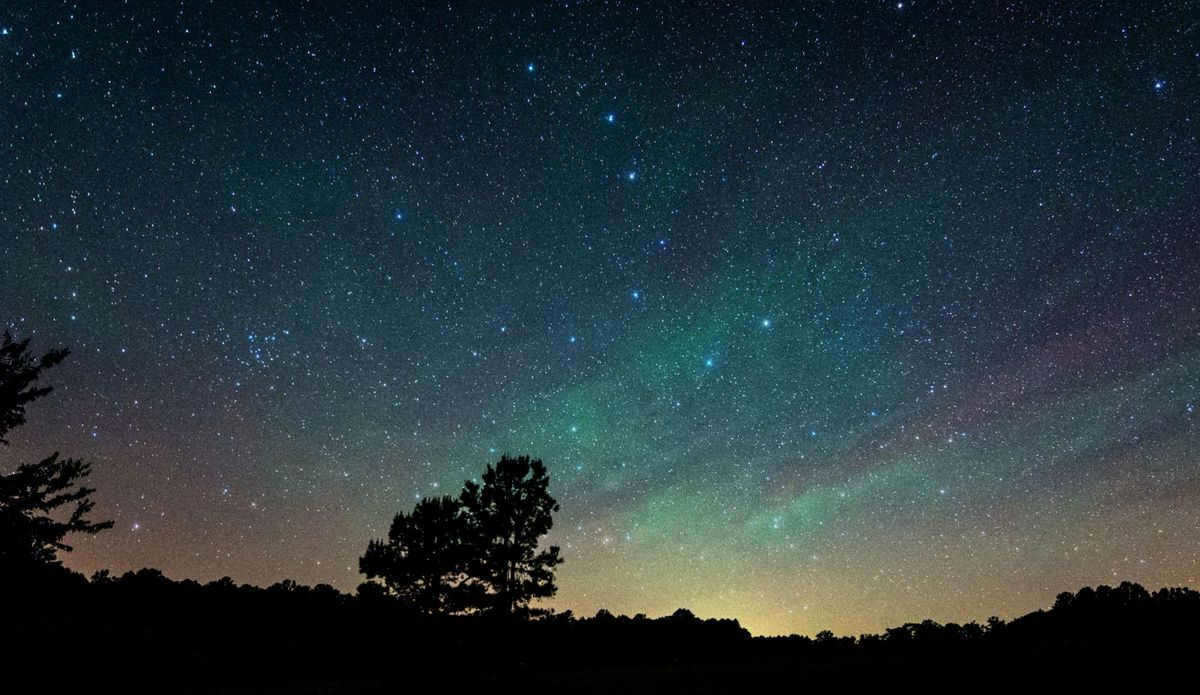
A significant container in the sky during the summer months. Photo: Bill Dickinson
What causes the relocation of the container in the sky?
Therefore, if we observe the ladle at the same time of day but during different periods of the year, we will notice it in varying locations and orientations.
Clearly, an asterism represents a large circular formation around a particular point in the sky. The container completes one full rotation within a year.
Rotation of the Celestial Sphere: Daily and Yearly
Firstly, we have the yearly rotation of the celestial sphere, which is associated with the Earth’s movement around the Sun in its orbit. As the Earth orbits the Sun, different constellations come into view from our planet’s nighttime side. These constellations are known as seasonal constellations. However, there are certain constellations, like the Big Dipper, that are visible throughout the year and do not go below the horizon. Unlike the Sun or Moon, which rise and set, these all-season constellations move in circles rather than arcs.
Secondly, the position of the Big Dipper within the all-season constellations changes due to the Earth’s rotation on its axis. The Earth completes one full rotation in approximately 23 hours, 56 minutes, and 4 seconds, causing the Big Dipper to make a circle in the sky.
What is the relationship between these two movements? It is important to note that our planet completes one full rotation on its axis in 23 hours and 56 minutes, while noon (the time when the Sun is directly south) occurs approximately every 24 hours. (It is important to remember that we follow solar time, not sidereal time!) The interesting thing is that the Sun is actually about 4 minutes behind each day. This is due to the fact that the Earth not only spins on its axis, but also orbits the Sun. As a result, the Earth needs to “adjust” a little each day in order for the Sun to be directly south again.
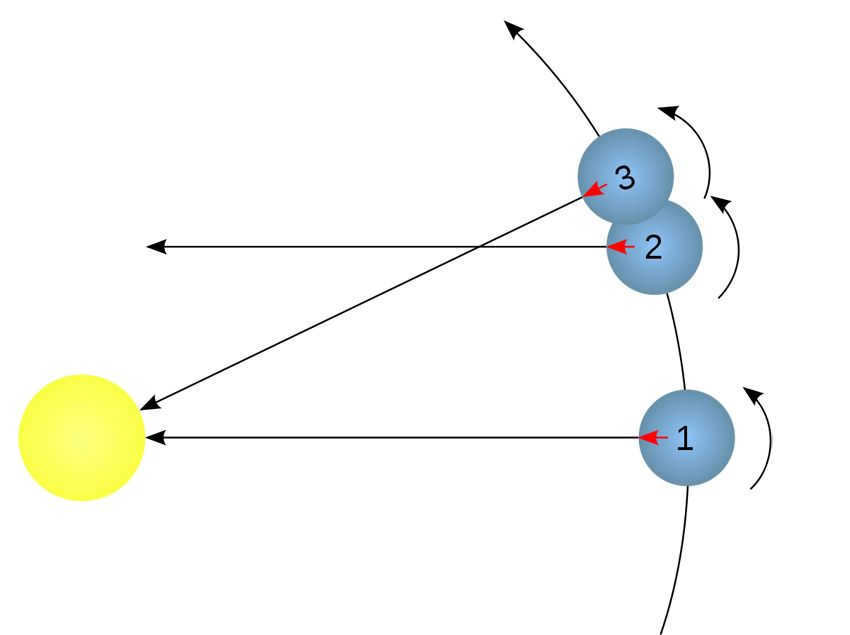
Solar time and sidereal time differ due to the Earth’s orbital motion. In sidereal time, the Sun appears exactly south at position 1 for an observer on Earth. However, after a complete revolution on its axis, the Earth returns to its starting point and the Sun is not in the south (position 2). To bring the Sun back to its original position, the Earth needs to “turn” a little more. This orbital motion causes a solar day to be 4 minutes longer than a sidereal day. Over the course of a year, this accounts for 365 × 4 = 1460 minutes, or about 24 hours. Consequently, the stars and constellations complete an additional 366 circles in a year. Source: Wikipedia
However, the constellations show no concern for the Sun! Their motion across the sky is solely a result of the Earth’s rotation on its axis! They are actually leading the Sun, appearing in the southern sky 4 minutes earlier each day. Consequently, over the course of 365 days, they complete 365 orbits and an extra revolution around the Earth, totaling 366 orbits!
What is the celestial object that the Big Dipper revolves around?
During the day, the Big Dipper’s ladle traces a circular path in the sky, descending to the horizon and rising to the zenith. This circle is centered around a specific celestial object. Do you know what that object is?
The center of this circle is located at a point in the sky known as the north celestial pole. Essentially, it is where the Earth’s axis projects onto the celestial sphere. The Earth’s axis of rotation passes through the south and north poles, and if you were to extend it infinitely, it would create the south and north celestial poles in the sky.
The Big Dipper: A Reliable Landmark
For centuries, the Big Dipper has served as a dependable landmark due to its close proximity to Polaris. By using the shape of the dipper, you can easily determine the direction towards the north, as well as locate other prominent stars and constellations. Here’s how you can do it.
Locating Polaris using the Big Dipper
Polaris, also known as the North Star, indicates the direction towards the geographic north. Therefore, if you find yourself traveling and need to navigate at night, it is essential to locate Polaris in the night sky. However, it may not be the brightest star as commonly believed, and the constellation of Ursa Minor, to which it belongs, is relatively small and dim.
And this is where we require the assistance of the dipper from the Big Dipper! What we will require are the two outermost stars in the dipper itself, Dubhe and Merak. (They create the distant wall of the ladle from the handle.) The star Merak is located at the bottom and Dubhe is located at the top. Now mentally visualize a line extending from Merak to Dubhe and extend it further, approximately five times the distance between Merak and Dubhe. This line will indicate the direction of Polaris!
The brightness of Polaris is equivalent to the brightness of the stars in the Big Dipper. Now it is extremely simple to determine the north direction, you just need to draw a vertical line (perpendicular) from Polaris to the horizon. This will indicate the north direction.
Spring constellations and stars
The major stars and constellations of the spring sky can be easily located using the bucket of the Big Dipper. They can be found directly below the bucket, as well as under its handle.
A zodiacal constellation called Leo can be formed by a large trapezoid made up of 4 stars that are roughly the same brightness as the ladle. The lower right corner of the trapezoid is marked by the brightest star of the constellation, Regulus.
The handle of the bucket points towards the bright star Arcturus, which can be observed in the evenings from February through October in the middle belt of Russia. Arcturus is the head of the constellation Volopassus, which resembles an ice cream cone.
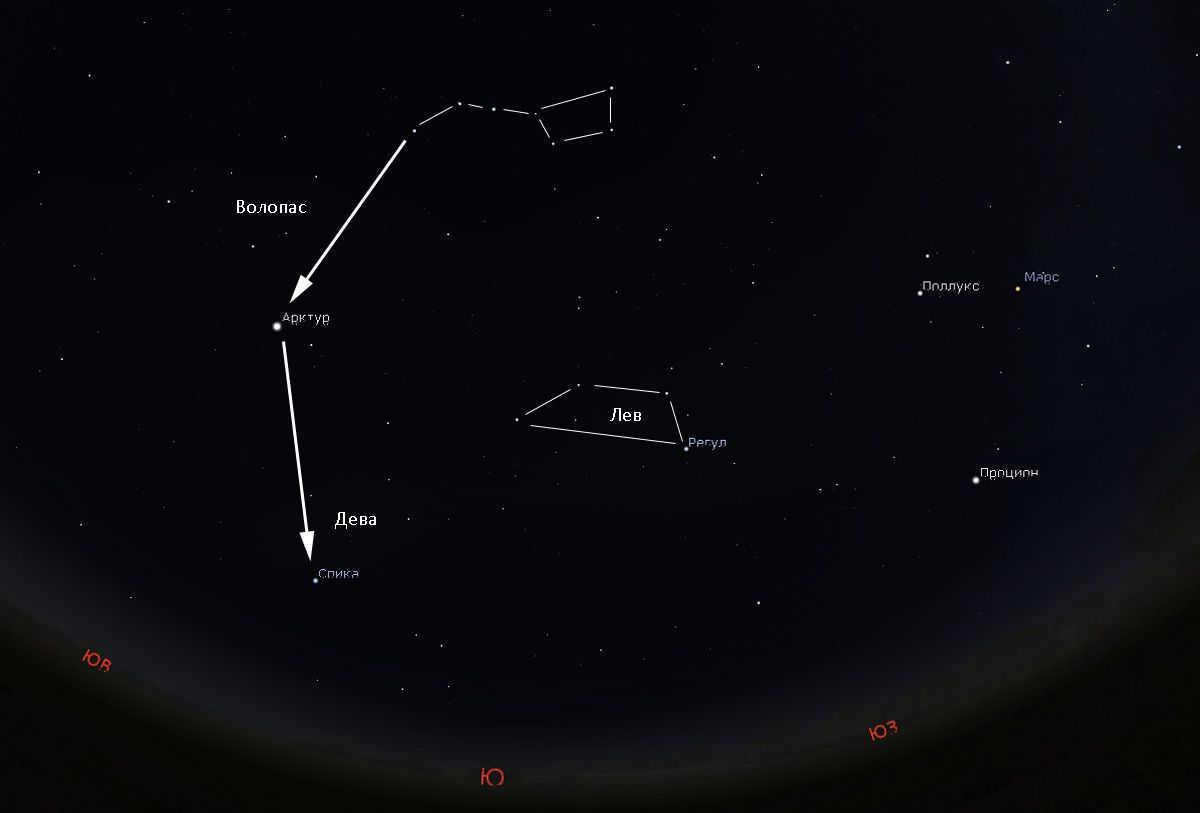
The Big Dipper can be used as a guide to locate the prominent constellations and stars of the spring season. This can be seen in the diagram provided by Stellarium.
If we extend the arc from the handle of the dipper towards the south, we will come across two notable stars: Arcturus and Spica. Arcturus is a bright star that is part of the constellation Virgo, which is one of the twelve zodiacal constellations. Spica, on the other hand, is the leading star of Virgo. These two stars, along with Regulus, are the primary stars that dominate the spring sky. Other constellations such as Leo Minor, Cancer, Sextant, and Cup can be found by tracing a path starting from Leo, passing through Volopassus, and finally reaching Virgo.
It’s worth noting that during spring, the ladle-shaped part of the Big Dipper is almost directly overhead when it is inverted!
Winter constellations and stars
The winter sky is filled with vibrant and dazzling constellations. These constellations are closely clustered together, immediately capturing one’s attention. The Winter Hexagon asterism is particularly remarkable as it consists of the 6 brightest stars in the winter sky (excluding Betelgeuse), forming a massive shape. Positioned at the top of the hexagon is the star Capella, which serves as the leader of the Ascendant constellation. To locate Capella, simply draw a line from Megrez to Dubhe and extend it by five times the distance between Megrez and Dubhe. This line will guide you to the brilliant 0 m star, Capella. All other winter stars and constellations can be found below Capella.
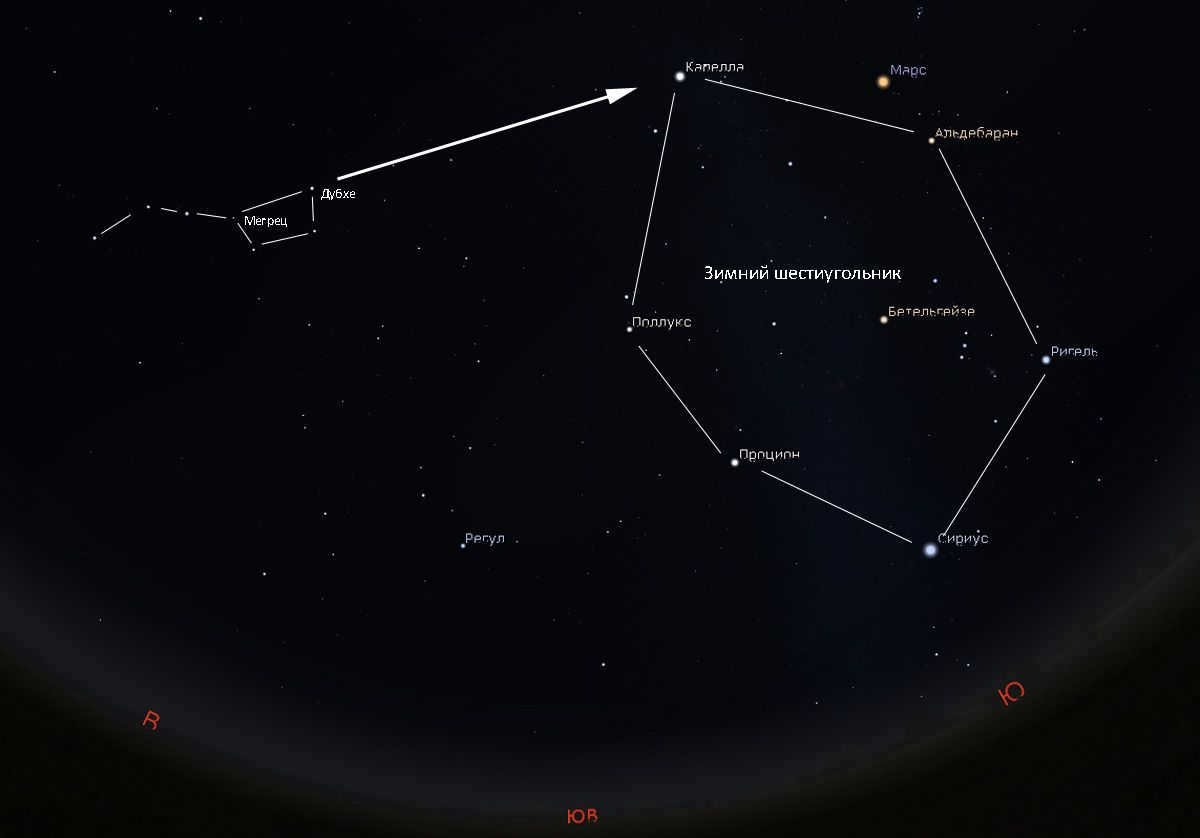
The Big Dipper and the winter sky constellations. Illustration: Stellarium
Constellations and stars in the summer sky
Among the stars visible in the summer are the prominent Vega, Deneb, and Altair (in southern Russia also Antares), and among the constellations is the Swan. Vega, Deneb, and the Swan constellation can be located by drawing a line from the star Fekda to the star Megrets, and extending it far beyond Megrets. The first highly luminous star encountered along this path will be the star Sadr or gamma of the Swan.
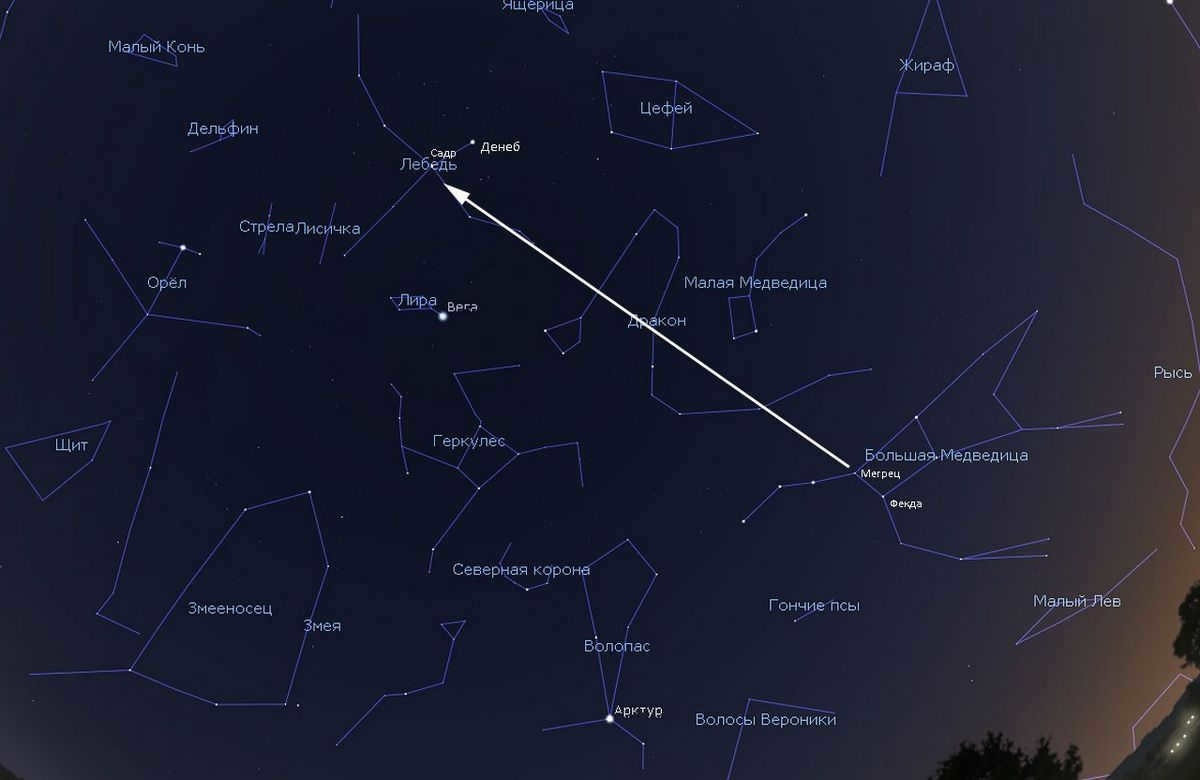

The two stars, Fegda and Megretz, in the Big Dipper can be used as pointers to locate the constellation of the Swan. To get a closer look, click on the image. Image Source: Stellarium
Sadr is situated at the center of the Swan constellation, which resembles a cross. The brightest star in the Swan, Deneb, is also nearby. Finding the Summer Triangle becomes easier from there, as Deneb is a part of it!
Constellations in the Fall Season
Among the various constellations that can be seen during the autumn months, Pegasus and Andromeda are particularly prominent. Pegasus can be easily identified by drawing a line from the stars Dubhe and Merak, which are part of the Big Dipper, to Polaris, the North Star, and extending it further. This line will lead you near the western boundary of the Square of Pegasus.
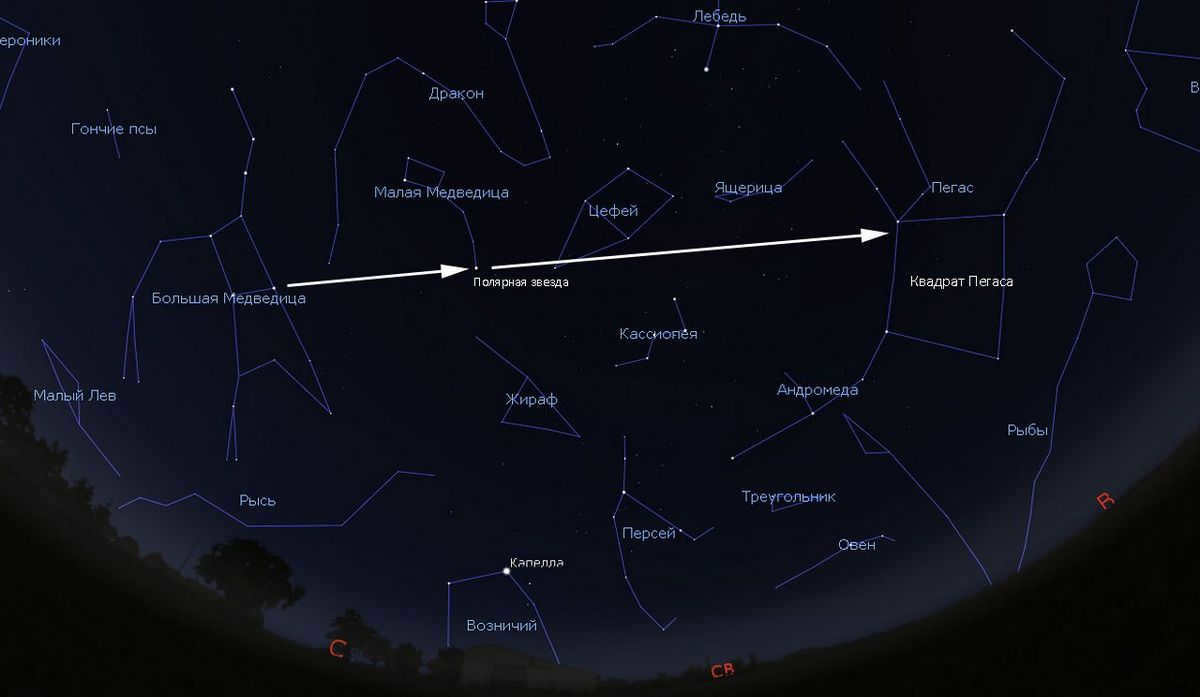
The Big Dipper can serve as a guide to locate the fall constellations such as Andromeda, Pegasus, and Pisces. Feel free to click on the image to get a closer look. Image source: Stellarium
The Big Dipper: its historical and future significance
Throughout centuries, astronomers have referred to the stars as “fixed stars,” but in reality, they are not fixed at all. Stars move through the vastness of space, revolving around the center of our galaxy. However, this movement remains imperceptible to the human eye due to the immense distances separating us from the stars.
However, if we were given the chance to travel back in time, let’s say, 50 or 100 thousand years ago, we would be greeted with an entirely different sky. Only a few constellations have remained unchanged in their appearance, such as Orion. The majority of star patterns would be entirely foreign to us!
Furthermore, we wouldn’t be able to identify the familiar seven stars of the Big Dipper. Here is how the Big Dipper would have appeared 100,000 years ago.
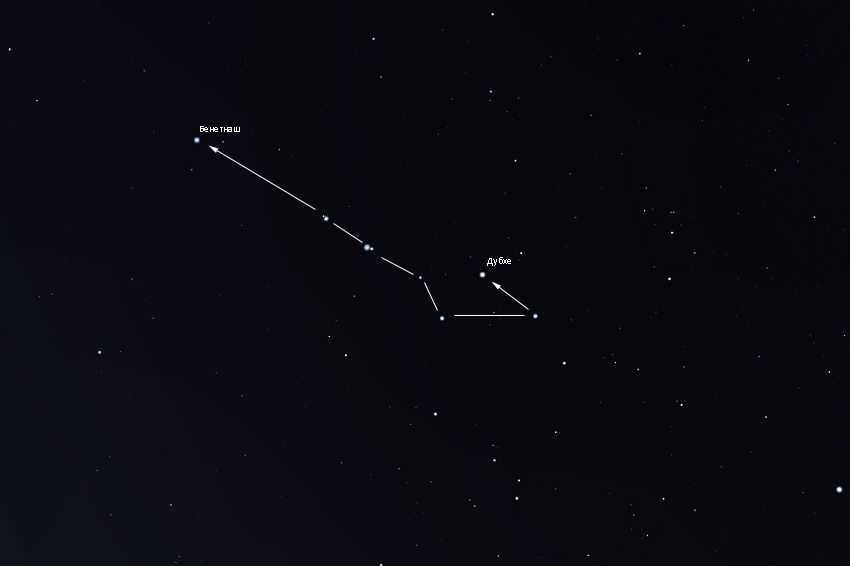
The appearance of the Big Dipper in the Earth’s sky was quite different 100,000 years ago. The image above, generated by Stellarium, shows how it looked back then.
However, if we remove the outermost stars, Dubhe and Benetnash, the shape of the bucket would still be recognizable. Surprisingly, most of the stars within the bucket are moving in the same direction and are parallel to each other! Astronomers believe that the dipper of the Big Dipper is actually the center of a scattered star cluster that is located so close to the Sun that its stars are spread across the entire sky.
Now, let’s fast forward to the future. What will the pattern of the bucket look like in 100,000 years?
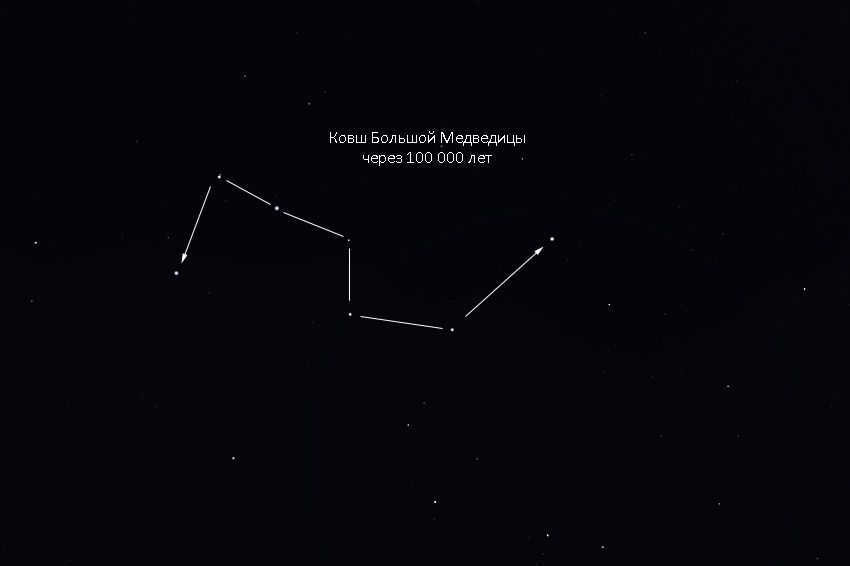
In 100,000 years, the appearance of the Big Dipper’s bucket will change. Image: Stellarium
Even then, the overall arrangement of the stars in the constellation remains the same, but Dubhe and Benetnash alter the shape of the ladle, making it unrecognizable.
We should consider ourselves fortunate that we currently have such a practical and visually informative constellation in the night sky!
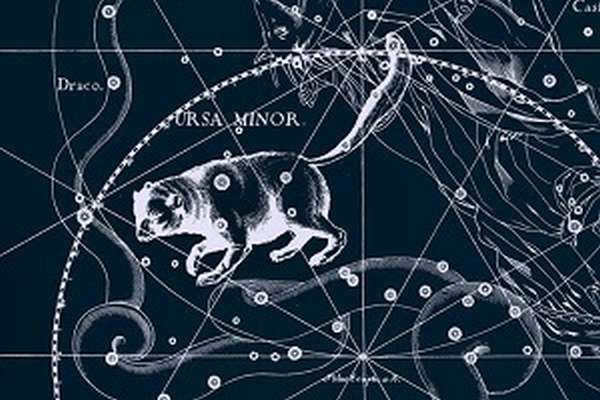
The Little Dipper is the most popular constellation among those who enjoy gazing at the nighttime sky. The cosmos is filled with unexpected surprises and discoveries just waiting to be made. There is an abundance of knowledge to be gained!
The stars that twinkle in the heavens are actually vast collections of gaseous matter, and the arrangement of constellations takes on peculiar shapes. Are there any similarities among them, or are they all truly unique?
Observing the night sky and delving into the mysteries of the universe can be a fascinating experience for children and their parents alike.
Appearance of the Ursa Minor constellation
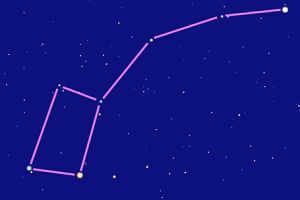

The Little Bear constellation is situated adjacent to the Big Dipper and forms a miniature dipper shape. If you connect all the stars within it, it resembles the same familiar vessel we remember from our childhood.
This group of celestial bodies is relatively faint, and it is easier to locate it in a sky devoid of light pollution.
In order to observe this constellation with the naked eye, you must first locate Polaris, which stands out due to its size and brightness.
While there may be other objects that appear brighter in the sky, the most brilliant one is only visible to human eyes. Polaris, a supergiant star, outshines all the others with its stunning radiance. Interestingly, it also has two companions accompanying it.

The central star is the main star, and it is 2000 times brighter than the Sun. Recently, the discovery of a second satellite became known due to its small size. For many years, this dwarf satellite remained unseen through the lenses of telescopes on Earth.
The Little Bear constellation stars’ names
The Little Bear constellation is composed of numerous stars. In terms of luminosity, they may be less bright than their neighboring stars in the Big Dipper, but they are still easily visible on a cloudless night.
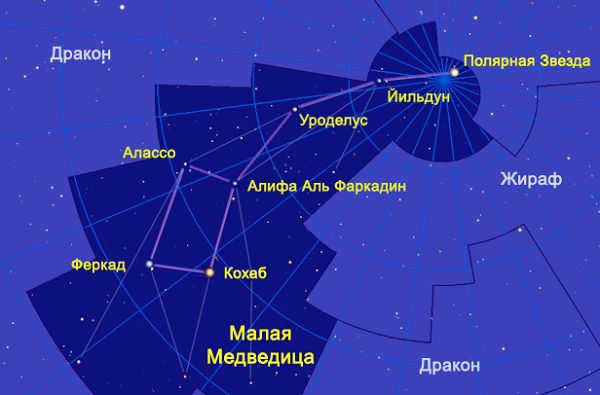

Four of these stars have unique names, while the rest are designated with Greek alphabet letters:
- Alpha. It is the first star in the constellation and is also known as Polaris. It is the brightest star in the night sky.
- Beta. Another name for it is Cohab. This star is the second brightest in the cluster and is an orange giant with a companion.
- Gamma is Fercadus. The names Beta and Gamma for these stars mean “two calves” in Arabic.
- Delta, Epsilon, Zita, and Ita do not have any specific names.
All of these stars are located more than 400 light-years away from Earth.
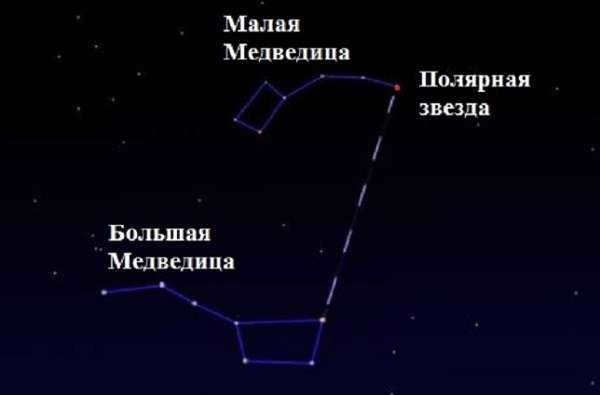
Here are some instructions to follow:
- Choose a night with clear skies. It is much easier to spot the faint lights of the Ursa Minor constellation in a cloudless sky. It is best to find a location away from artificial light sources. Such places can be hard to find in big cities, so it may be necessary to venture out to the outskirts.
- Locate the Ursa Major constellation in the sky. It is difficult to mistake it for anything else. Due to its relatively close proximity to Earth, the stars in this constellation appear brighter than others. It has a trapezoid shape with a long handle.
- Find Polaris, which is located north of the Ursa Major constellation and serves as the endpoint of the Ursa Minor constellation.
- This is what you’re searching for. Trace your gaze from the handle of the Big Dipper to the Dipper itself, and the entire constellation will be visible before your eyes.
Locating Polaris in the Sky: A Step-by-Step Guide
If you’re wondering how to find Polaris in the night sky, look no further than the Big Dipper. This well-known constellation is visible year-round in Russia and other countries in the northern hemisphere. The Big Dipper is composed of several brightly burning stars that form the shape of a large dipper, making it a helpful guide for locating Polaris.
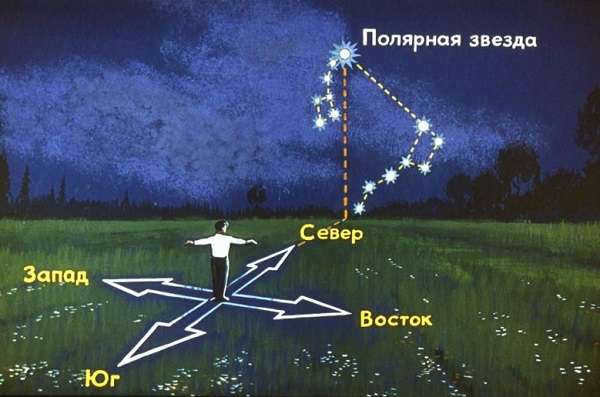
To create a representation of the constellation, one must imagine a line that is five times longer than the distance between its furthest points.
Another method for locating a Cepheid star is by employing a compass. Polaris serves as a guiding star for explorers, leading them to the North Pole.
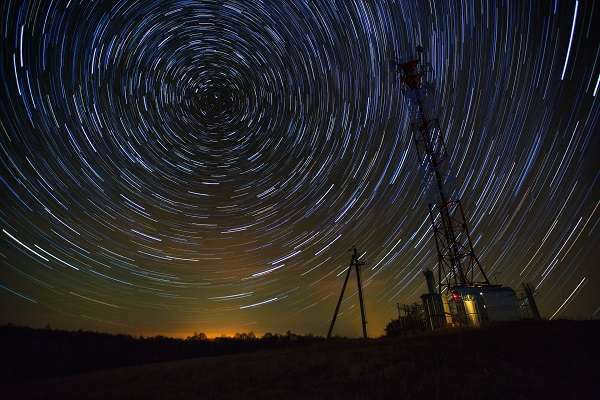
By examining the celestial body, one can note that it remains stationary unlike the others. Throughout the course of the evening, all the star formations traverse the nocturnal horizon, while this particular one remains fixed above the Arctic Circle.
How constellations got their bear names
Despite not bearing any resemblance to actual bears, the constellations were given names associated with these magnificent creatures. But why weren’t they named after their shape, like “dippers” for example? The origin of their bear names can be traced back to the ancient Greeks, who were aware of their proximity to the North Pole.
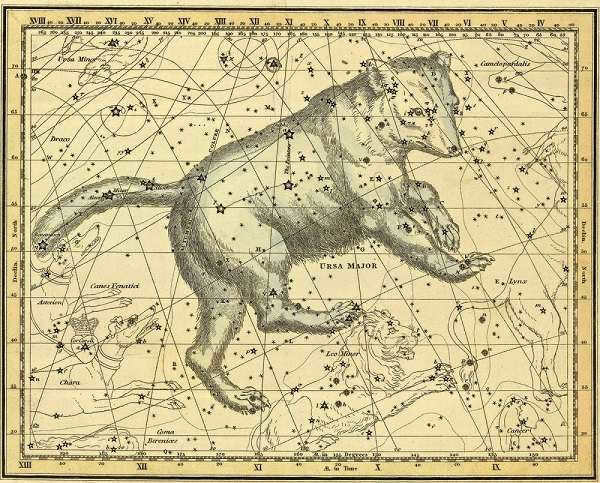
During ancient times, people didn’t have access to maps, so they relied on the stars to navigate. Surprisingly, their belief, dating back to 545 BC, turned out to be accurate.
It’s no surprise that the main resident of the North Pole is the polar bear. This is why there are two constellations named after this majestic creature, which are located near the northernmost point of our planet.
Constellations have been a well-known phenomenon for centuries, serving as guides for travelers even before the Common Era. However, these clusters of stars held a deeper significance for the ancient Greeks, going beyond mere celestial decorations.
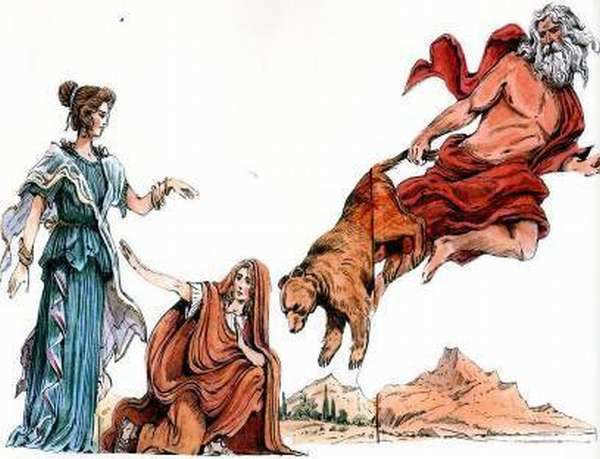
Legend has it that the mighty god Zeus had a clandestine paramour. It is said that she possessed an otherworldly allure and captivated the gazes of all who beheld her. Her name was Callisto.
Also worth reading: A concise and comprehensible explanation of the principles and characteristics of classical and economic liberalism
One fateful day, the maiden committed a transgression that came at a great cost. She was transformed into a fearsome bear. In order to safeguard her beauty, Zeus cast her into the heavens, but in his haste, he inadvertently elongated her tail. Hence, the elongated tail of the Big Dipper.
The faithful companion of the girl was her dog, which transformed into a bear cub and accompanied her into the sky. This story was a popular tale among the ancient Greeks.
The expansive night sky has the potential to reveal numerous extraordinary phenomena. It is even possible to acquire knowledge about bears, a creature familiar to all. How many undiscovered constellations exist within the vastness of space? Knowledge serves as a gateway into the universe that surrounds us.
We are commencing a series of blog posts that will delve into the various constellations that adorn the night sky. We will explore their origins, fascinating stars and objects, and, of course, provide guidance on how to locate them amidst the celestial expanse. Be sure to follow us on Instagram to ensure that you don’t miss out!
Let’s begin with the well-known Big Dipper, which is the most renowned constellation in the northern hemisphere. It serves as a starting point for exploring the starry sky and is often a familiar sight to many people from their early childhood. Additionally, it frequently appears in movies and cartoons.
What is the reason behind the name “Big Dipper”?
The Big Dipper is comprised of seven bright stars that form the shape of a ladle. Observing them often leads to the question of how this ladle can resemble a bear. ))
I, too, had the same question when I first encountered this constellation during my distant childhood. It wasn’t until a few years later, when I came across the complete version of this constellation in a reference book, that everything became clear.
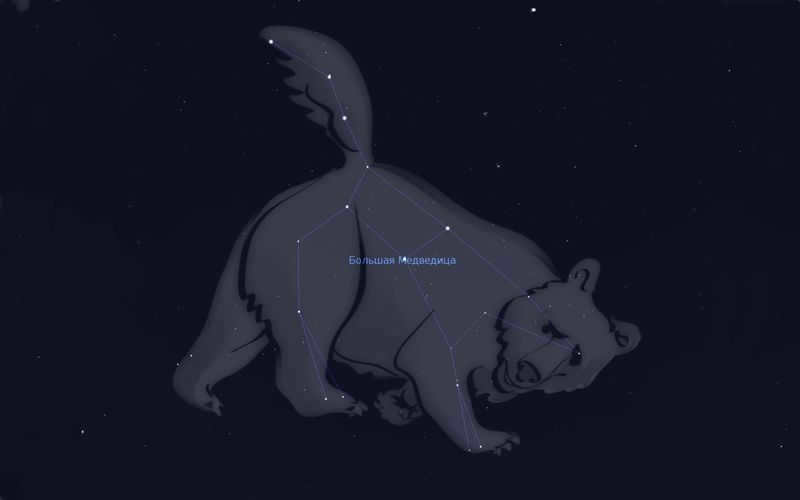
The constellation of Ursa Major consists of the prominent figure known as the Big Dipper, which includes the bucket shape and its tail. Additionally, there are the paws and the head that complete this celestial formation. These stars, however, tend to be less luminous and more challenging to observe due to the bright city lights.
Ursa Major, also referred to as the Great Bear, holds a significant position among the constellations. It ranks third in terms of its size in the night sky, preceded only by Hydra and Virgo (which we will discuss in one of our upcoming posts).
The bucket shape of the Big Dipper has been recognized since ancient times. However, different cultures have given various names to this constellation, such as the Plow, Wagon, and Seven Sages. References to this constellation date back to the ancient Greeks in the 3rd century BC.
It is worth noting that the Great Bear is prominently featured on the flag of Alaska.
Big Dipper’s Celestial Bodies
The most luminous celestial body (alpha) of the Big Dipper is Dubhe, which translates to “bear” in Arabic. Positioned at the upper right of the dipper, it stands out among the other stars.
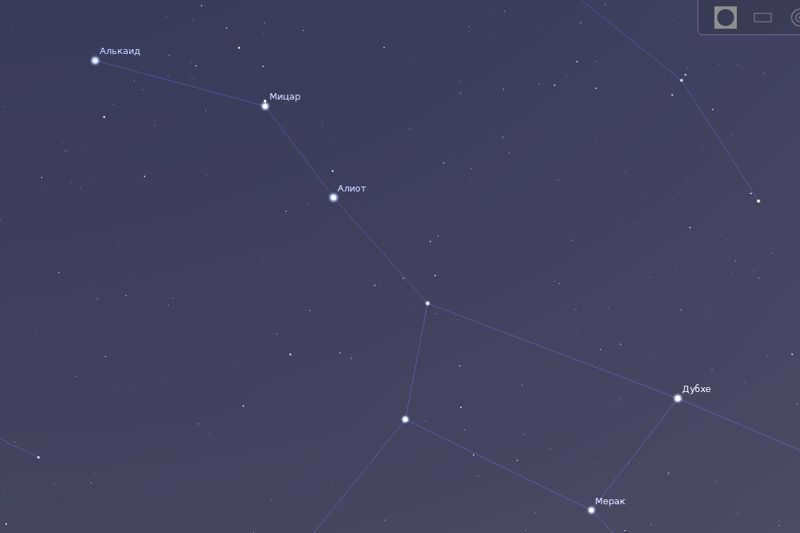
Right beneath it lies Merak, the second most luminous star of the Big Dipper. Its name is derived from the Arabic word for “loins”. Together, these stars create the side of the dipper that is commonly referred to as the pointer. By drawing a straight line through these stars, we arrive at the renowned Polaris. Polaris, the faithful guide for all explorers and seafarers.
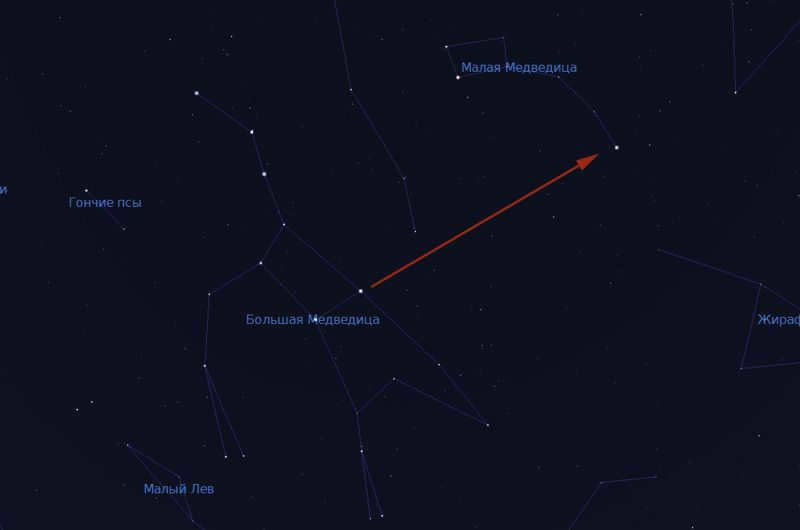
Polaris is located at the end of another constellation, known as Ursa Minor. However, let’s return to the Big Dipper.
Mizar is the sixth brightest star in the Big Dipper and is found in the tail. It is noteworthy because it is a binary star system. Upon closer inspection, you may notice another nearby star called Alcor, which means “forgotten” or “insignificant” in Arabic. It is believed that throughout history, the ability to distinguish between these two stars has served as a reliable method for testing vision.
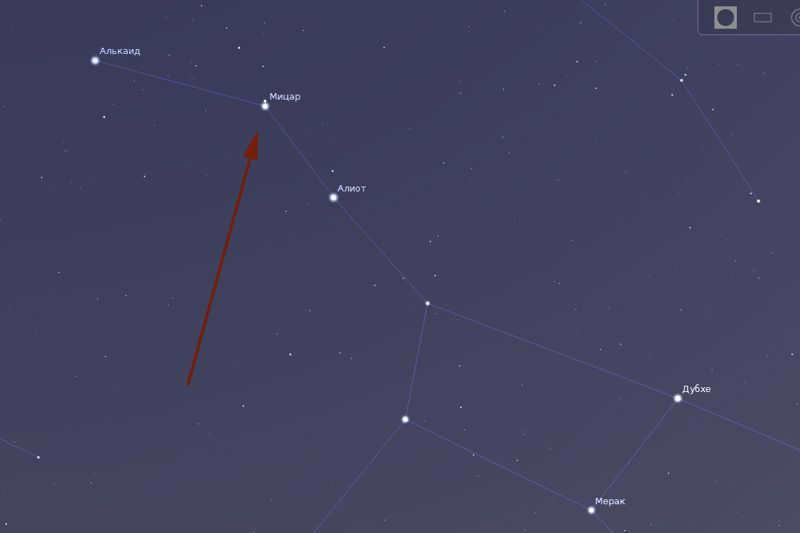
Galileo first laid eyes on the double star through his telescope back in 1617.
Thanks to advancements in technology, even a basic amateur telescope is sufficient to catch a glimpse of Mizar and Alcor in today’s world.

Here is the appearance of Mizar and Alcor when observed through the MEADE Infinity 70 telescope.
Deep Space Objects in the Ursa Major
The Ursa Major constellation contains numerous fascinating deep space objects. To observe them, a telescope with a diameter of 114mm or larger is required (such as the Sky-Watcher BK 1149eq2 or MEADE Polaris 114).
Galactica Vertushka. This object is listed in the Messier catalog as M101. It was first discovered in 1781 using a relatively primitive instrument compared to today’s standards. When observed with a modern telescope away from city lights, the spiral structure of the galaxy becomes visible. Here is an image captured by professional equipment:

The Vertushka galaxy can be found positioned in the space between the farthest stars of the Bear’s tail, creating a nearly perfect equilateral triangle.
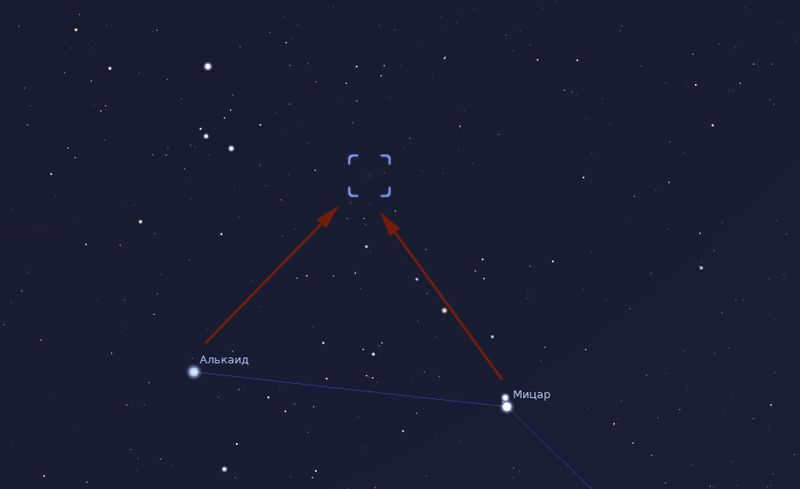
However, the Big Dipper vicinity is not solely occupied by this remote celestial body.
Adjacent to and positioned above the star Dubhe, in close proximity, lies the Cigar Galaxy (M82).
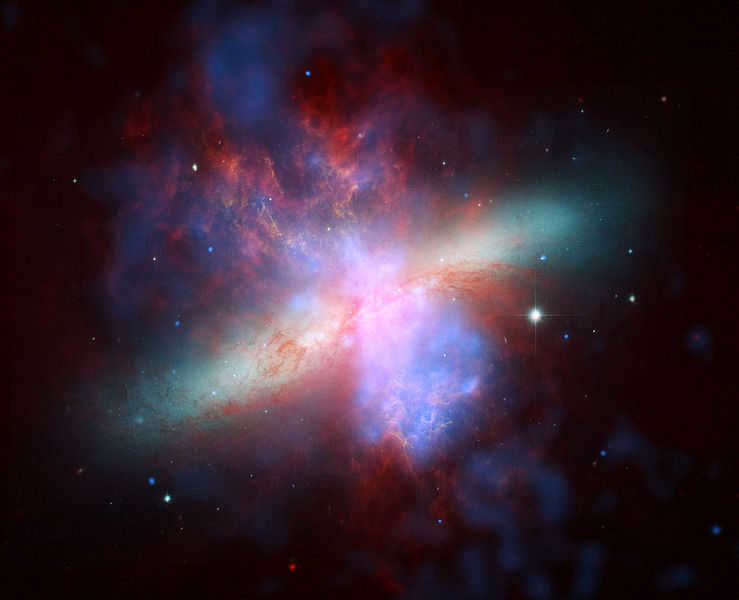
Furthermore, there is Bode galaxy located in the vicinity.
Situated to the right of the star Merak (the bottom-right star of the Big Dipper) are the Owl Nebula (M97) and Surfboard Galaxy (M108)..

Near Fekda (the star located in the lower-left corner of the bucket), you can discover M109, the Vacuum Cleaner galaxy.
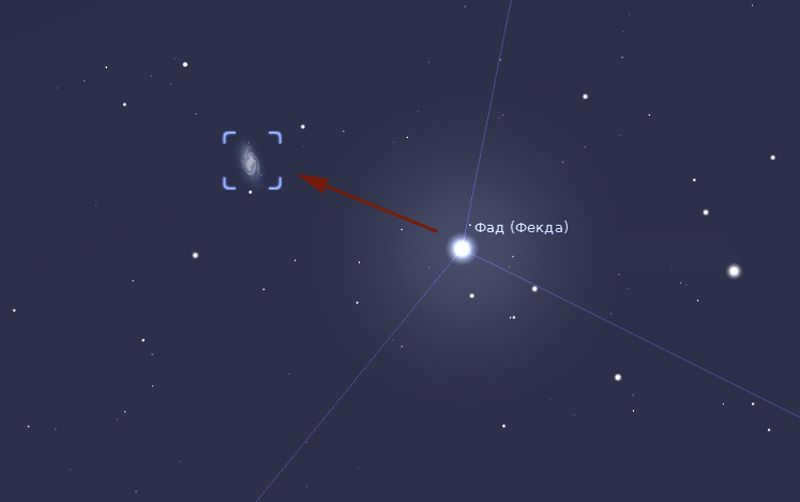
In future editions, we will delve into each nebula and galaxy found in the Messier catalog and provide guidance on locating them.
Now is the perfect time to grab your telescope or binoculars and embark on a celestial scavenger hunt. The optimal conditions for observing the Big Bear occur during the months of March and April. So, keep an eye out for a warm, clear night, prepare a thermos of aromatic coffee, and venture out beneath the starry sky to greet the familiar Big Bear once again).
Enjoy your observations and the thrill of new discoveries!
If you found this publication interesting and helpful, be sure to share it with your friends on social media! ))
To receive observation tips and stay informed about the most exciting celestial events,
subscribe to our channels: Instagram, Youtube.
© This text and photo are protected under copyright law. Any use or reproduction of the materials or any part of the materials on the website, including the design and decoration elements, is permitted only with the consent of the copyright holder and must include an active link to the source: telescop.by
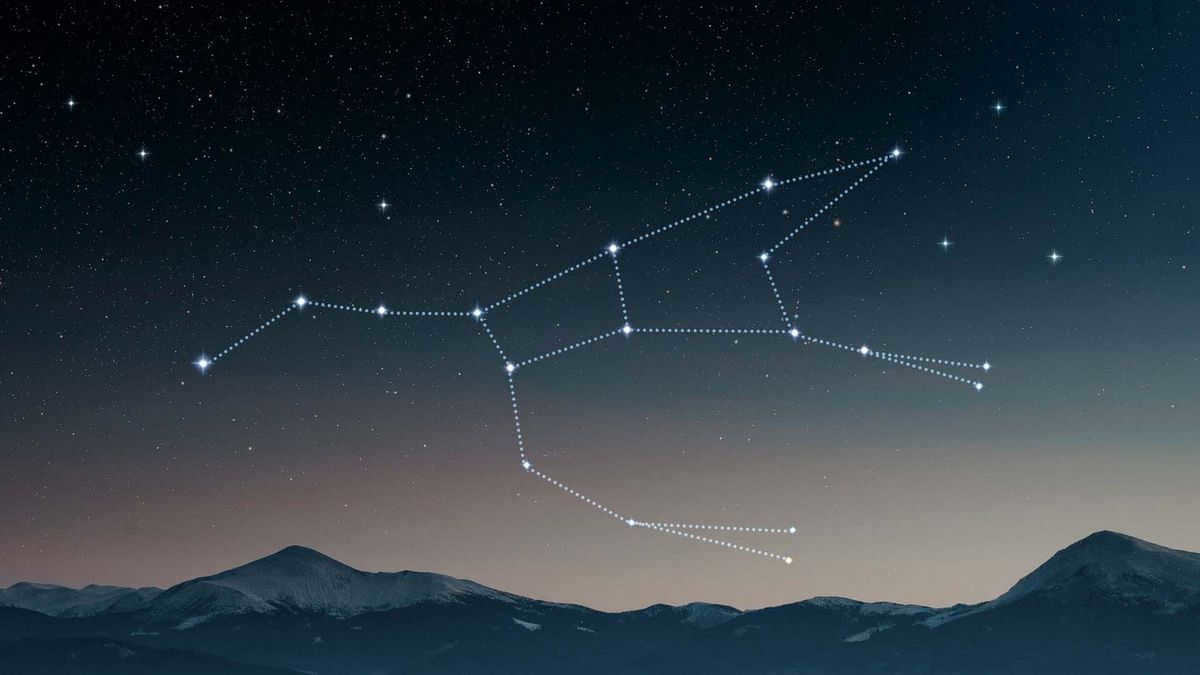
The Big Dipper is a well-known constellation that has been observed by humans for centuries. Its popularity stems from the fact that the stars within the constellation emit a bright light, making it easily visible to the naked eye if one knows where to look.
Overview of the Big Dipper
The Big Dipper is located in the northern celestial hemisphere and is considered one of the largest constellations in the cosmos, ranking as the third largest.
Research on the Big Dipper dates back to ancient Egypt, and continues to this day with ongoing studies of various objects within the constellation. The earliest scientific work on the Big Dipper was conducted by Claudius Ptolemy, and many modern studies are influenced by his astronomical perspective.
Description of the primary stars found in the constellation
Collectively, the stars create a rather sizable ladle, along with a handle:
Aliot
Summary:
| Age, millions of years | 394 |
| Temperature, K | 8750 |
| Radius, solar | 4.2 |
| Luminosity, solar | 108 |
| Spectral class | A1III-IVp kB9 |
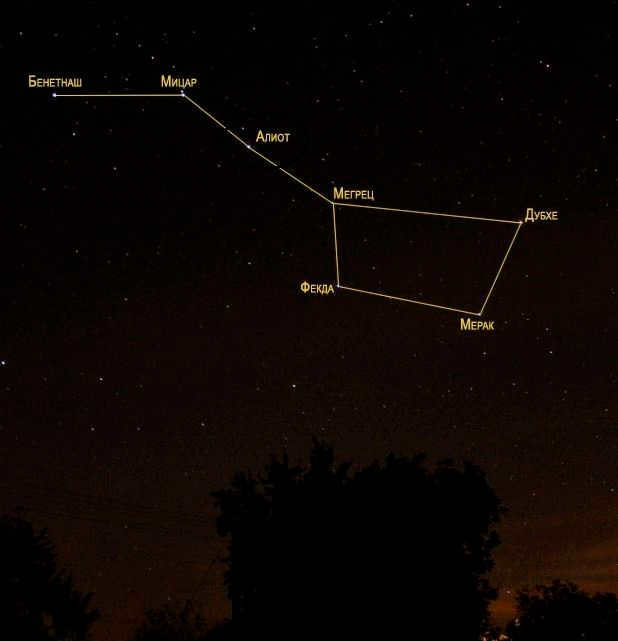
The brightest star in the Big Bear constellation is this one. It is part of a large dipper formation. This celestial body has a mass almost three times that of the well-known Sun, and its brightness is over a hundred times greater. Consequently, the star’s temperature rises to 8750 ° C.
Potassium and chromium are the main elements found in Aliot’s composition, and it is because of these components that the star can exist in space for about 394 million years. The risk of Aliot turning into a nebula is virtually non-existent due to the star’s stable temperature.
Dubhe
Summary of information:
| Age, millions of years | unknown |
| Temperature, K | 4500 |
| Radius, solar | 30 |
| Luminosity, solar | 316 |
| Spectral class | K0III + F0V. |
The temperature of Dubhe, a well-known celestial body among astronomers, is also incredibly high – approximately 4500 degrees. It serves as a prominent marker for detecting the
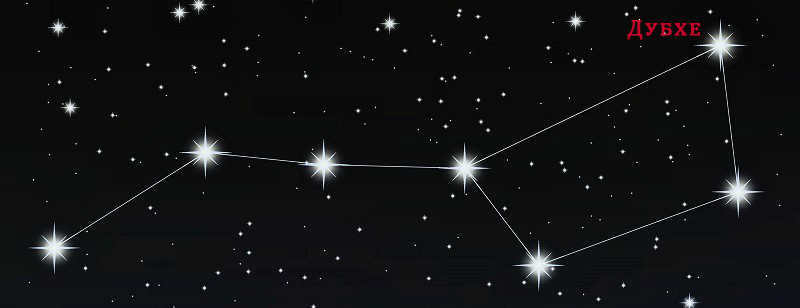
Polaris and other celestial objects. Focusing on this specific star ensures maximum precision, as locating Dubhe is extremely straightforward – it lies to the west of all the stars within the Big Dipper’s bowl.
Moreover, Dubhe remains visible throughout the year, never setting below the horizon. It is worth noting that among all celestial entities, Dubhe holds the 33rd position in terms of brightness in the entire cosmos.
Benetash
Brief Information:
| Age in millions of years | 10 |
| Temperature in K | 15700 |
| Radius in solar | 3.4 |
| Luminosity in solar | 580 |
| Spectral class | VZ V |
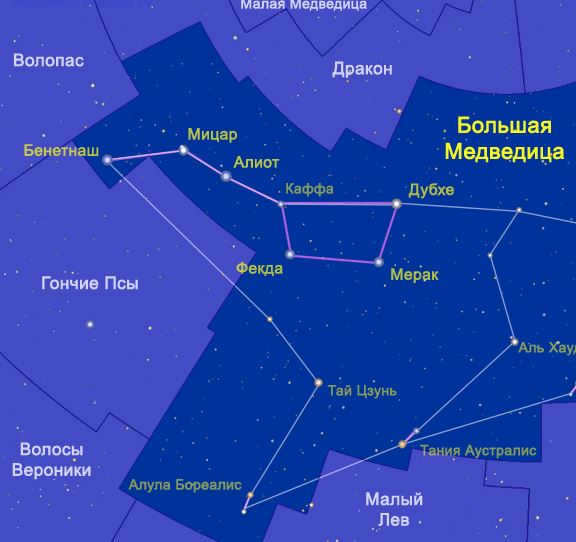
A celestial body located on the periphery of the handle of the Ursa Major constellation, Benetnash is a notable star. With its strategic position, it is commonly utilized by experts in space navigation to achieve precise calculations. Benetnash serves as a reliable guide, as it is the easternmost star while Dubhe, another prominent star, is the westernmost. This makes it an ideal reference point for astronomers conducting their research.
Moreover, Benetnash holds significance as the primary representative of its spectral class B3. Its stable coordinates make it an essential focal point for new scientific investigations. Consequently, many astronomers commence their studies by observing this star.
One captivating aspect of Benetnash is its vibrant blue hue. This color is a result of the vigorous burning of helium and hydrogen within the star. Due to its rapid rotation, Benetnash spins around its axis at an impressive speed of approximately 150 kilometers per second.
Out of all the stars in the Big Dipper constellation, Benetnash stands out as the most youthful. With an estimated age of around ten million years, astronomers believe that its lack of satellites and nearby objects can be attributed to its relatively young age.
Mizar
Summary:
Unlike Benetnash, Mizar possesses its own permanent companion known as Alcor. The star and the traveler have varying temperatures, resulting in different brightness levels for the celestial bodies. Identifying these objects is relatively simple – the star Mizar appears brighter and larger in size, while its companion Alcor appears roughly twice as faint. These objects are situated in a system together.
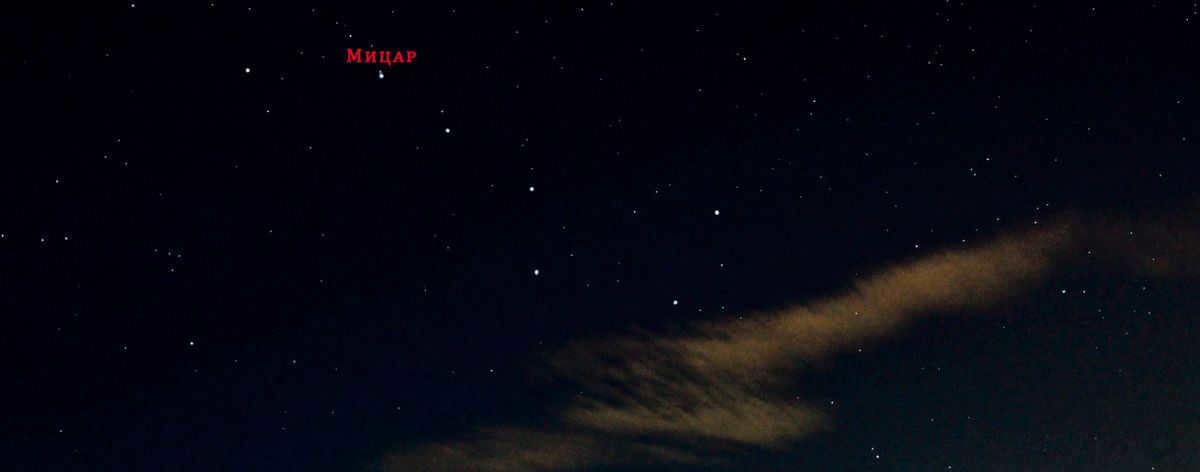
According to extensive research, the star Mizar is found to have five components. Until 2009, no new findings were made regarding this star due to the difficulties in studying its companion. The location and dimness of the star resulted in numerous errors for scientists.
However, a recent study of Alcor revealed that it is composed of five parts.
Specialist Eric Mamazhek, who is leading this research, reports that he has confirmed the arrangement of Alcor by analyzing meticulously captured photographs and cross-referencing various variables and previous scientific studies. The scientist’s investigation of the satellite is ongoing.
Summary of information:
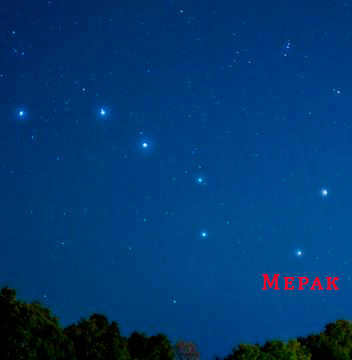
The star, which makes up the dipper’s bowl, is among the oldest stars in the Big Dipper, with an age of over 500 million years.
As the hydrogen fuel in the star’s core has been depleted, Merak is cooling down rapidly.
Astronomical sciences professor Adrian Melotte has put forward the hypothesis that the impending explosion of Merak is simply a new stage in its evolution.
It was the explosion of a supernova star like this that allowed life to originate on Earth, as the star’s emitted rays destroyed the ozone layer.
Meanwhile, numerous scientists observe that the Big Dipper is undeniably connected to evolution, basing this on the constellation’s inclusion of several stars that possess similar properties to Merak.
Fekda
Summary of information:
| Age, millions of years | 300 |
| Temperature, K | 9355 |
| Radius, solar | 3.04 |
| Luminosity, number of solar | 65.255 |
| Spectral class | A0 Ve |
This particular star is immobile, with a rotational speed of approximately two hundred kilometers per second. However, its temperature, luminosity, and brightness are relatively modest. The star lacks any distinctive coloring, but can be easily identified by its position on the left side of the dipper’s bowl.
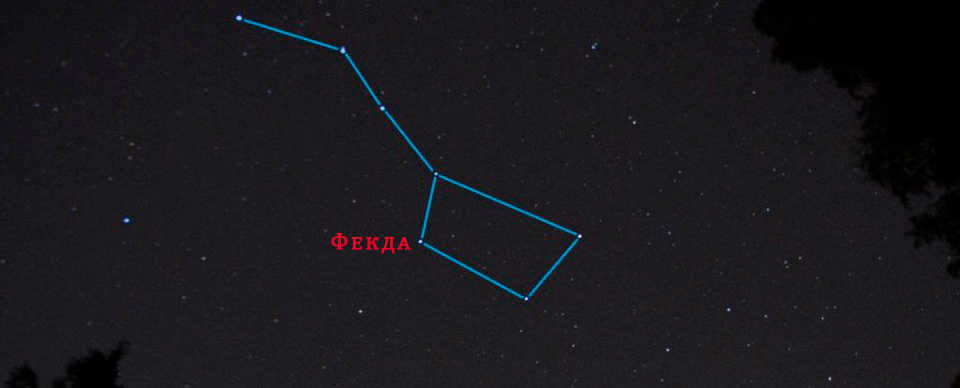
Claudius Ptolemy, an ancient scientist, discovered that Phecda shares certain characteristics with Mars, as it emits vibrations that are very similar to those of the planet.
At present, there are some scientists who argue that Feqda is actually a binary star system. However, the accuracy of this hypothesis remains unknown since the search for a second star has not yielded any success.
Summary of data:
| Age, millions of years | 300 |
| Temperature, K | 9480 |
| Radius, solar | 1.4 |
| Luminosity, solar | 14 |
| Spectral classification | A3 V |
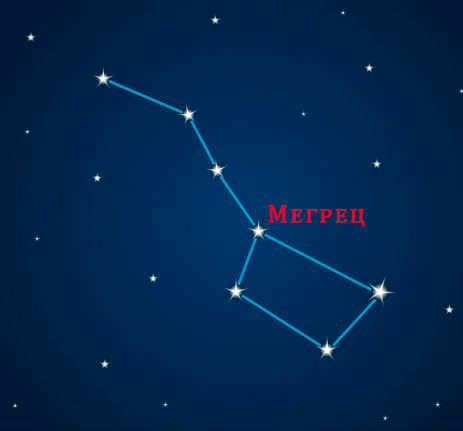
In contrast to the other elements of the Big Bear, this particular star is relatively faint. However, it plays a crucial role in the process of converting hydrogen gas into helium in its core. As a result, Megretz is surrounded by a significant amount of infrared radiation.
While this celestial body does not have any satellites, it is situated in close proximity to the central region of mobile stars. These stars undergo periodic changes in their distance from Megretz. Over millions of years, they have been oscillating between approaching and moving away from the star, but Megretz remains stationary.

